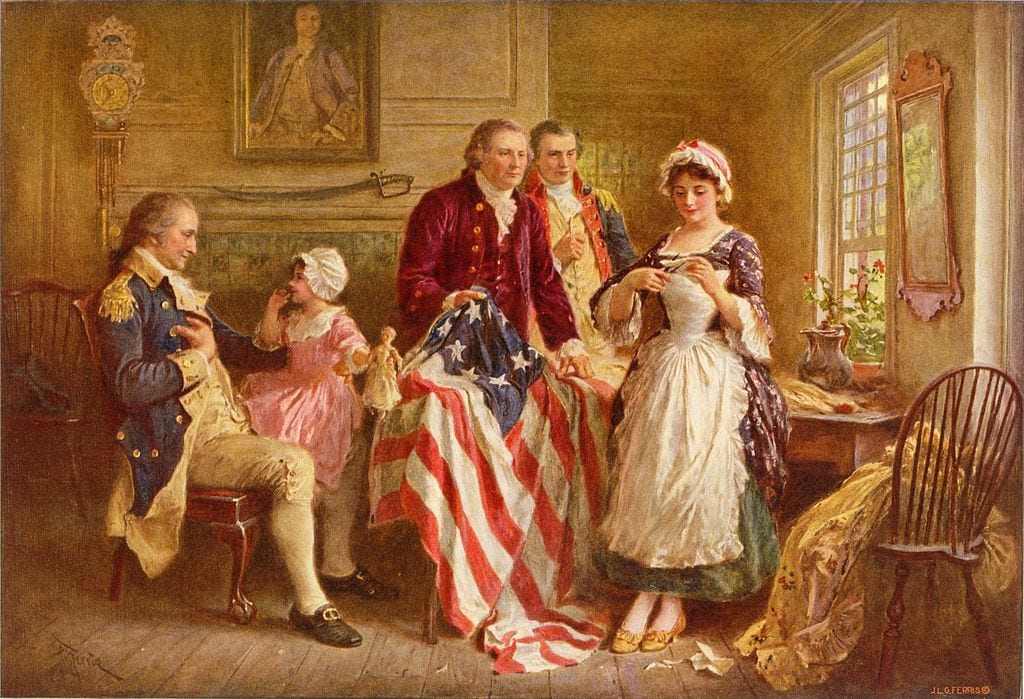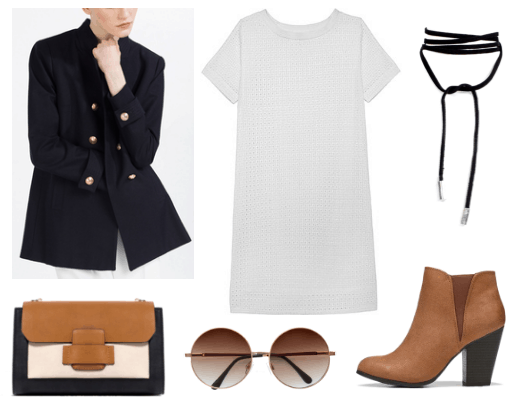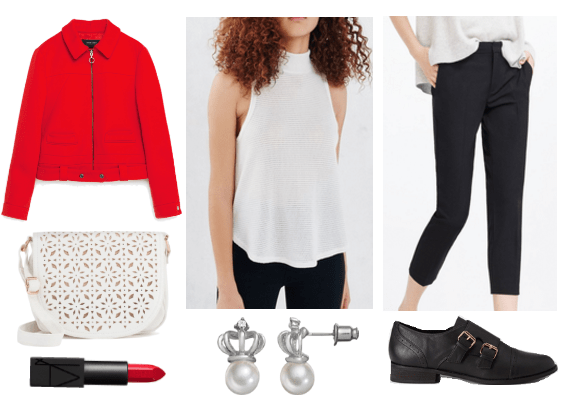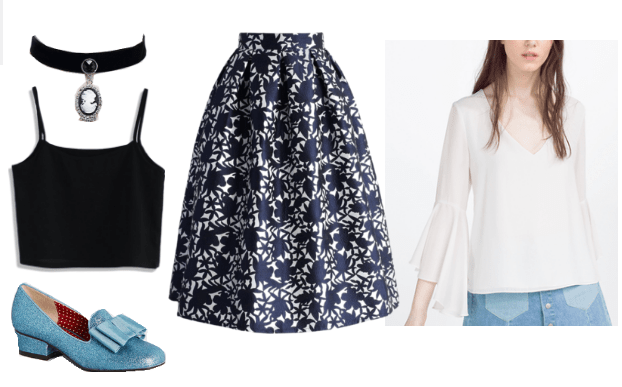
I took AP US History almost three years ago, and our course, naturally, covered the American Revolution. Though I remember some things from my class, it’s unfortunately not quite as fresh in my mind as I’d like. I probably couldn’t tell you what the Stamp Act of 1775 accomplished or who was in the Continental Congress, but thankfully you’re here for some fashion.
I decided to cover the American Revolution, and only the American Revolution (1775-1783) this week because fashion changed so much in the years after the war and in the years leading into the war. Pre-war fashion was a matter of circumstance, and post-war fashion was a matter of Americans choosing to follow France’s sartorial example in order to avoid being similar to England. The clothes for men and women during the war were still as complex and multi-layered as ever. Suffice to say there’s a lot to get through, so let’s get started!
Table of Contents
Fashion Overview
Men, in 1700s colonial America, wore a loose white shirt, a waistcoat, breeches, stockings, a dress coat, and a cravat. Waistcoats, prior to the 1780s, buttoned to just below the waistline and had a little skirt of extra fabric, and coats were usually long (to about the knee) with tight sleeves and a slightly bigger cuff. Men also traditionally wore boots or low buckled heels and hats that varied based on one’s class and position. Wigs were not generally worn, though, and even powdering one’s hair had gone out of fashion by the 1760s.
Women’s fashion during the American Revolution consisted of a gown and petticoat worn over a second hooped petticoat which kept one’s skirt out, and stays, which were whale-boned undergarments similar to corsets. Of course, the fabrics, dyes, and number of layers of garments depended on the wealth of the lady in question. Many ladies dressed very simply during the war in order to send more money to the American troops. To save money, many women’s dresses had a stomacher, which was a triangular insert of fabric that could be switched out to give the dress a new look.
The bodices of women’s gowns were usually long waisted, often coming to a point, and necklines were often square and cut low. A pannier, a bunched overskirt, was also an alternative to the hooped petticoat, though both fell out of style in the 1780s in favor of the bustle. Women also wore low buckled heels and frilly hats and caps to cover their hair.
Outfits Inspired by the American Revolution
I’ve avoided making a Hamilton reference thus far, but the costume design is pretty great if you want to get an idea of what Revolutionary War clothing looked like. The American Revolution may be back in the public eye, but the clothing still feels hard to work into modern day looks.
If you’re looking for that little bit of extra flair, though, here are three looks inspired by the era. The first is pretty casual, while the second is a little more intense, and the third is practically revolutionary. (Not really, sorry, I just wanted to make that pun.)
Outfit #1: You Say You Want A Revolution

Products: Dress, Coat, Necklace, Purse, Boots, Sunglasses
This first outfit is mostly inspired by the uniforms of the American troops during the Revolutionary War. I use uniform loosely, though, since the American troops were underfunded to say the least, and often the militias just fought in their everyday attire. The uniforms we do see depicted featured dark blue coats in the style of the 1770s, with white breeches and vests underneath.
While that version may not be the most historically accurate, it is quite recognizable, so I channeled it with a white t-shirt dress paired with a deep blue jacket. I wanted to keep the outfit pretty casual, though, as the troops weren’t professionally trained and maintained like the British were.
Why this choker? Do me (and yourself) a favor and tie those loose ends into a bow. Yep a bow, and viola, it’s a modern man’s cravat. You’re welcome. A pair of leather booties and a matching crossbody bag are practical but cute, and some circle sunglasses finish the look.
Outfit #2: The British Are Coming

Products: Top, Pants, Jacket, Shoes, Purse, Earrings, Lipstick
Since the British army was an actual professional army, this look is also far more professional. For this outfit, I used a turtleneck as a play on a cravat, and some cropped chinos are a decent stand-in for breeches. Rather than go for boots, which the soldiers did wear, though, I chose a pair of low buckle shoes that were more suited for colonial gentleman.
The redcoat needs no explanation, of course, though I did add a white cross body bag to emulate the straps the British troops wore to carry equipment. Crown earrings help demonstrate your love for king and country and a bold red lip adds another pop of color to the look.
Outfit #3: Tea Party

Products: Blouse, Camisole, Skirt, Shoes, Necklace
I think people in the past just liked to make things a lot more complicated than they had to be. Example: sumptuary taxes. Another example: petticoats and stomachers. Why did women’s outfits need to have so many pieces? I tried to pare down the parts a little, so you can have a traditional look that you can actually move in.
This flared sleeve blouse has a similar look to the gowns worn by colonial women, and a square camisole emulates their flat, low necked bodices. The small, repetitive design on this skirt, isn’t quite a liberty print, but it is reminiscent of one and the pleats are pretty in keeping with the times. While a little bit more French in design, these low heels are similar to the buckled shoes common during the period. Finally, cameo necklaces were quite popular for ladies, so a pendant choker is the perfect finishing touch.
More Styles by the Decade:
Want to travel to a different decade with your style? See my other posts on’90s fashion, ’80s fashion, ’70s fashion, ’60s fashion, ’50s fashion, ’40s fashion, ’30s fashion, ’20s fashion, ’10s fashion, 1900s fashion, and ancient Greece and Rome fashion for more!
What’s your opinion on American Revolution Fashion?
Are you planning to incorporate colonial style into your look this year? Are there any fashion trends you think I should have included? What’s your favorite look? Let us know in the comments, we’d love to hear from you!

Where are the pictures?
Great post dear!
So, good to see the ways an 18th c look could come forward in a 21st c outfit. You made a good start, but some of your resources sound pretty iffy. Hope you’ll check out a coupla blogs from clothing historians and update. Panniers were boned petticoats creating an oval shape going out from the hips, . A woman’s silhouette took the waist higher until we wind up in the 19th century with high waists. Bustles? Post Civil War, over 100 years later.
Love the Hamilton reference.